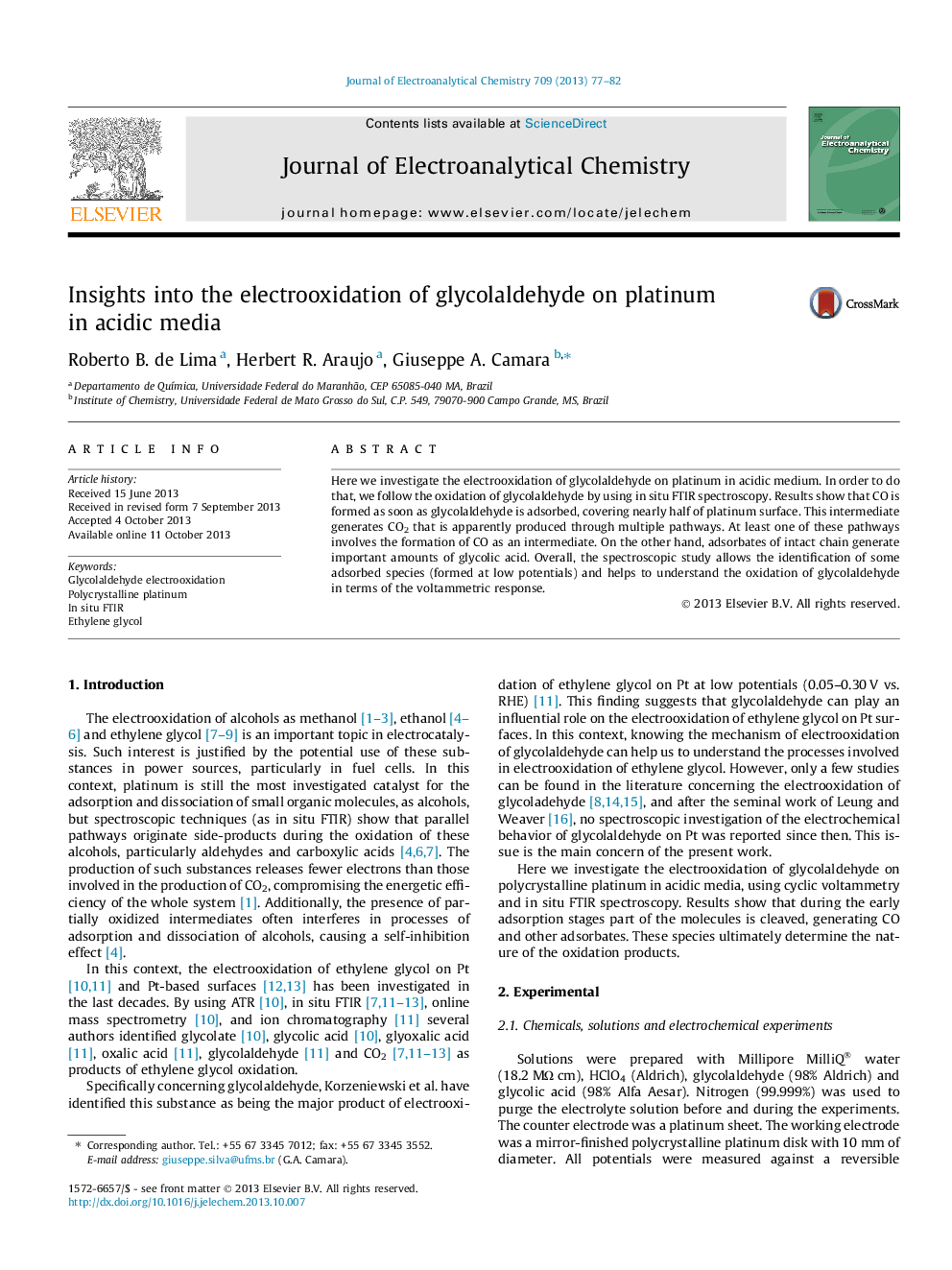| Article ID | Journal | Published Year | Pages | File Type |
|---|---|---|---|---|
| 218993 | Journal of Electroanalytical Chemistry | 2013 | 6 Pages |
•CO is formed during the early stages of adsorption of glycolaldehyde.•CO2 seems to be formed through several pathways, one of them involving CO.•Species of intact chain are also adsorbed on platinum.•Once oxidized, these species generate glycolic acid.•Glycolic acid seems to be the major product of oxidation of glycolaldehyde.
Here we investigate the electrooxidation of glycolaldehyde on platinum in acidic medium. In order to do that, we follow the oxidation of glycolaldehyde by using in situ FTIR spectroscopy. Results show that CO is formed as soon as glycolaldehyde is adsorbed, covering nearly half of platinum surface. This intermediate generates CO2 that is apparently produced through multiple pathways. At least one of these pathways involves the formation of CO as an intermediate. On the other hand, adsorbates of intact chain generate important amounts of glycolic acid. Overall, the spectroscopic study allows the identification of some adsorbed species (formed at low potentials) and helps to understand the oxidation of glycolaldehyde in terms of the voltammetric response.
